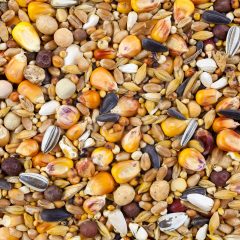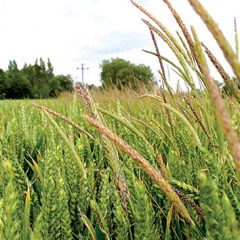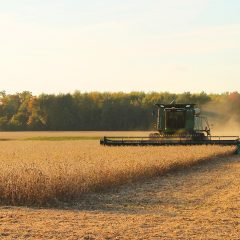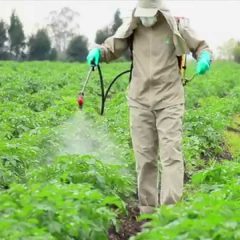New research out of the University of Illinois looks at the long-term consequences of crop rotations including corn, soybean, and wheat crops, compared to less diverse rotations. This study was conducted at the Northwestern Illinois Agricultural Research and Demonstration Center near Monmouth, IL, located in a region with “some of the most productive soils in […]
Read More, References, Comment »
The myth of “substantial equivalence” between GMOs and non-GE crops (called “isolines”) takes yet another hard science hit. A team of researchers in Mexico City has published their meta-analysis of genetic data on rice, canola, maize, sunflower, and pumpkin. They looked at wild, GMO, and non-GMO cultivated varieties of these five crops, analyzing phenotypic change. […]
Read More, References, Comment »
A new study published in the prestigious journal Proceedings of the National Academy of Sciences takes some of the mystery out of how aggressive weeds like Palmer amaranth and common waterhemp developed resistance to glyphosate herbicides so quickly. Researchers from Kansas State University have discovered that these pigweeds develop extra-chromosomal circular DNA (eccDNA), genetic material that […]
Read More, References, Comment »
In a collaborative research project, a team of scientists have conducted a nationwide assessment of factors contributing to an epidemic of herbicide-resistant weeds in the United Kingdom (UK). Their paper was published in Nature: Evolution and Ecology this week. It paints a crystal-clear picture of rapidly rising weed resistance – and a clear correlation with […]
Read More, References, Comment »
When the Crispr-Cas9 system to target DNA for genetic engineering (GE) was first identified, it was seen as a game-changer. Crispr-Cas9 is a natural defense mechanism used by bacteria to protect them from viruses that works at the cellular level by targeting and removing viral DNA. Scientists first began to see its potential for GE […]
Read More, References, Comment »
A team of animal scientists from the University of Illinois and Ohio State University pushed an unusual paper in 2004 in the Journal of Agricultural and Food Chemistry (Karr-Lilienthall et al., “Chemical Composition and Protein Quality of Soybeans and Soybean Meals from Five Leading Soybean-Producing Countries.” The beans were grown circa 2002. The soybeans and […]
Read More, References, Comment »
Across all of Brazilian agriculture, pesticide use rose 1.6-fold between 2000 and 2012, and increased 3-fold in soybean production. The majority of these increases were driven by pest management challenges on fields planted to genetically engineered (GE) corn, soybeans, and cotton. The land area in Brazil devoted to GE crops rose from 3 million hectares […]
Read More, References, Comment »
My good friend Brian Baker joined Urs Niggli, Christian Andres, and Helga Willer of FiBL (Research Institute of Organic Agriculture) in assessing the state of organic farming research around the world. Their paper is entitled “Building a global platform for organic farming research, innovation and technology transfer,” and was published August 16, 2017 in Organic […]
Read More, References, Comment »
A significant body of research now suggests that dietary exposure to glyphosate can alter the microbiome in the human stomach. One outcome of shifting the microbiome in the human GI track is what is often referred to as “sour stomach.” Anyone who has experienced a sour stomach knows what it is (but perhaps not by […]
Read More, References, Comment »
Our paper entitled “Concerns over use of glyphosate-based herbicides and risks associated with exposures: a consensus statement” came out February 17, 2016 in the journal Environmental Health. It was written by John Peterson Myers, Michael N. Antoniou, Bruce Blumberg, Lynn Carroll, Theo Colborn, Lorne G. Everett, Michael Hansen, Philip J. Landrigan, Bruce P. Lanphear, Robin Mesnage, Laura N. Vandenberg, Frederick S. vom Saal, Wade V. Welshons and Charles M. Benbrook. According to BioMed Central, publisher of Environmental Health, our glyphosate […]
Read More, References, Comment »










